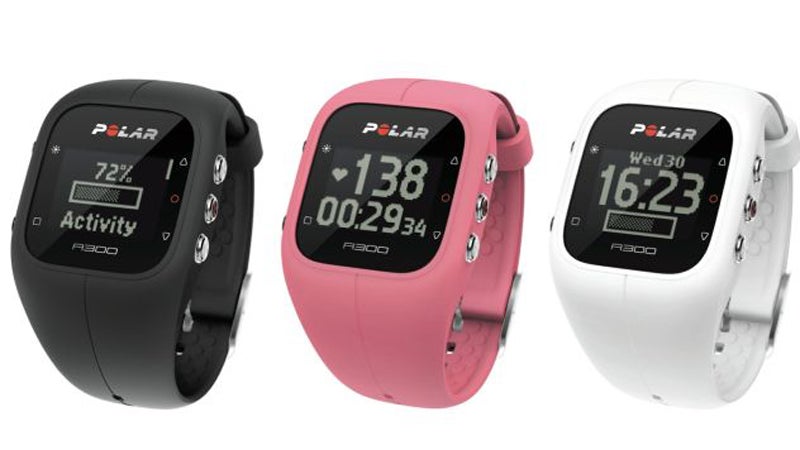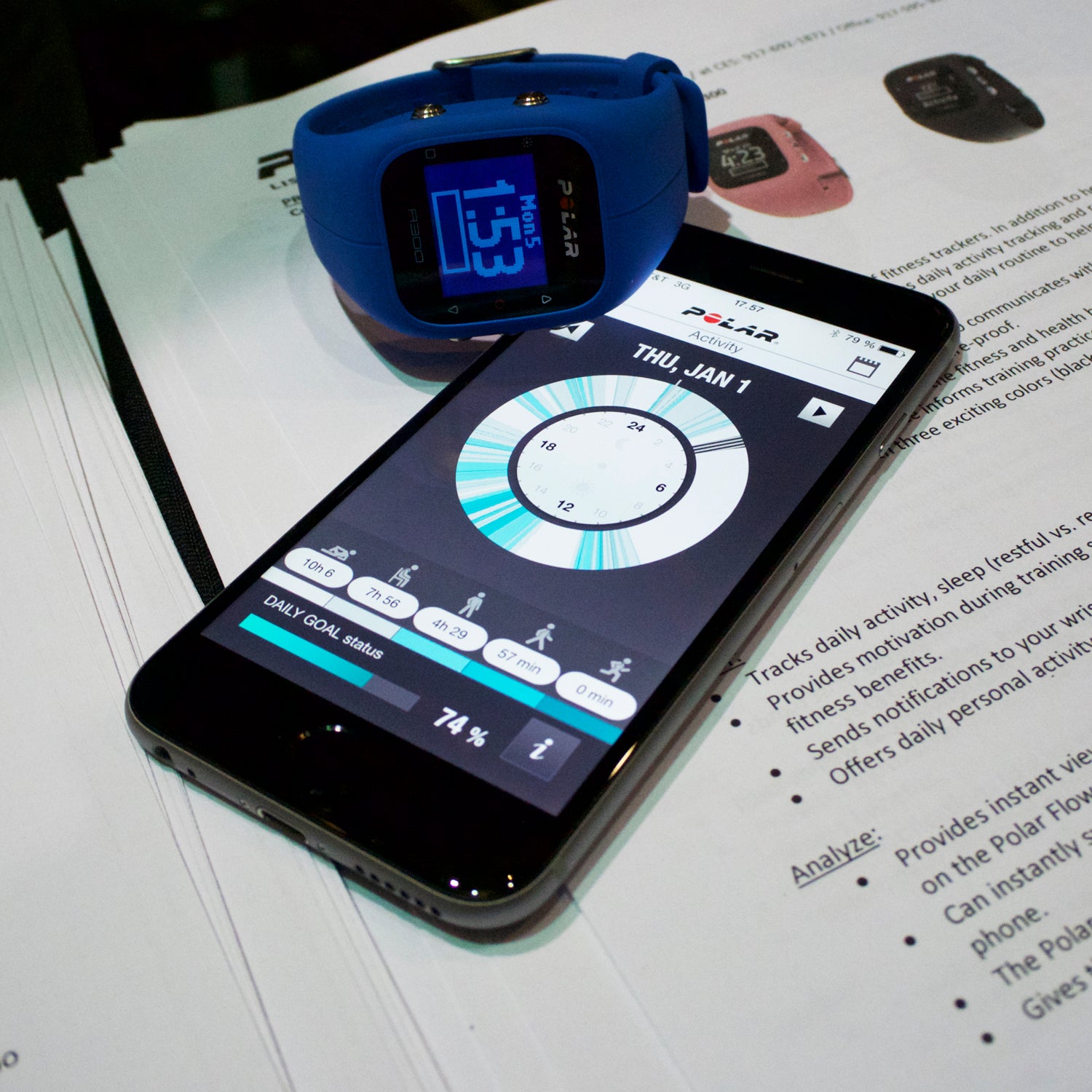There are three important things you should know about the new Polar A300 ($140, or $180 with heart-rate monitor strap), which debuted Sunday at the : it’s impressively small, thin, and light. And that’s a big deal.
If you’ve tried other wearables, you know the typical breed has squared edges that bite into your skin when you sit at your office keyboard or roll over in bed. This is part of the argument against activity trackers—people will quit wearing them because they’re not simpatico with daily use.

Polar is trying to bust free of those limitations with the tiny A300, which has soft, rounded corners. While it’s not as slick looking as some smart watches we’ve seen (like Garmin’s new Vivoactive), it’s packed with a lot of the functionality you’d expect from a brand that’s synonymous with fitness tracking.
It’s 100-percent waterproof (most trackers are not); counts steps and also inactivity, hopefully prompting wearers to move after prolonged periods of sitting; analyzes sleep patterns; has distinct fitness tracking settings; and pairs with Polar’s new app for deeper analysis of your daily activity.
What’s missing? GPS. Remember we said the A300 is svelte and light. The argument: when you add GPS, as , which costs $40 more than the A300, you get a fatter, heavier device on your wrist that you won’t wear 24/7. We buy that logic. The A300 isn’t a GPS watch. It’s a smartwatch with more fitness functionality than the average tracker—and it’s about 15 percent lighter than the M400 and has a smaller face.
The A300 is scheduled to go on sale February.


